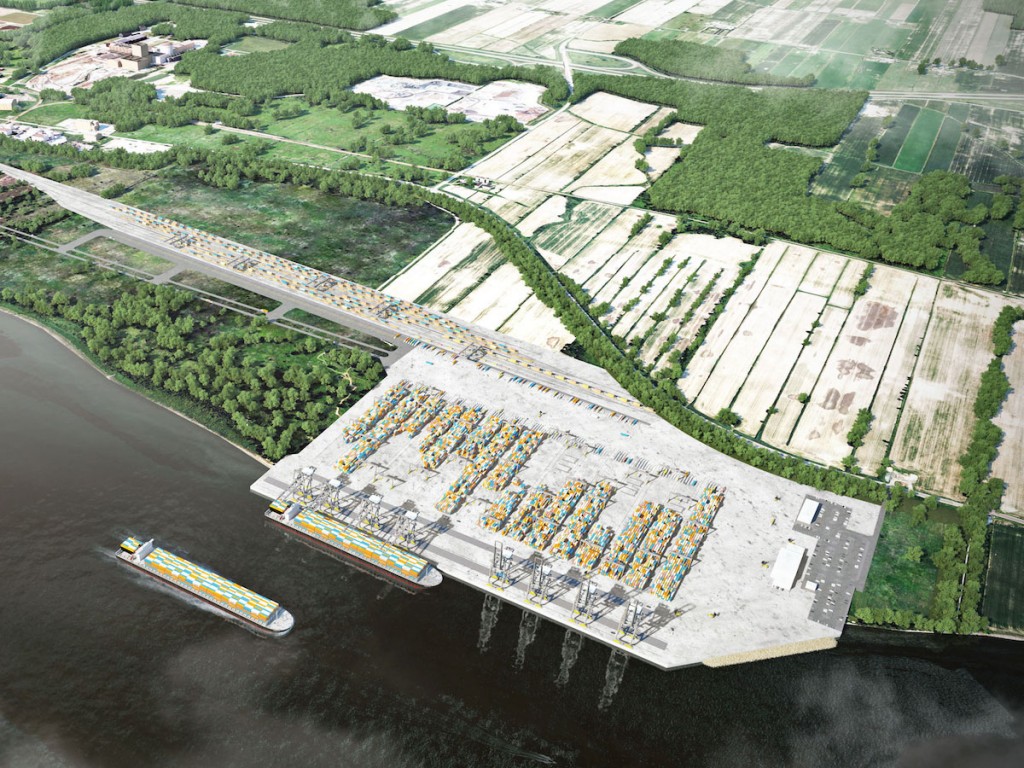Montreal’s Contrecoeur Terminal
Halifax expansions
Greenfield Challengers in Nova Scotia
On Canada’s East Coast, the total container market is relatively small at approximately 2.3 million TEUs, with the deep inland Port of Montreal holding the lion’s share at 1.7 million containers handled in 2018. But with the expansion of the Panama Canal spurring traffic between Asia and North America’s eastern seaboard and more Asian trade shifting from the Pacific to the Atlantic, Canadian ports are jockeying for position to retain or grow their business domestically and in such strategic markets as the US Midwest – a daunting challenge in light of US ports like New York/New Jersey now targeting mega containerships in the 18,000 TEU category.
“We certainly live in interesting times,” exclaimed noted Canadian transportation consultant Brian Slack.

“Never before has there been so much interest being placed on Eastern Canadian ports,” he told the American Journal of Transportation.
“There are some major players dipping their toes in the container market, from Hutchison Port Holdings in the Laurentia project at the Port of Quebec, SSA Marine in Melford (Nova Scotia), Avaio Capital in Novaporte (Nova Scotia), Canada Infrastructure Bank in Montreal’s Contrecoeur sector, DP World in Saint John, and PSA International of Singapore’s acquisition this past August of Halterm Container Terminal in Halifax. Only in the latter cases are there any major deep-sea container carriers presently committed to serve these terminals.
“If all projects were ever realized and succeeded in establishing regular services it would greatly exceed the capacity of the market,” Slack opined, adding: “Indeed, the first one to entice a container carrier to choose it in all likelihood would greatly reduce the chance of success of all others.”
According to Slack, the fundamental issue is which project can best demonstrate its ability to fill the ships of a potential container carrier?
“But the issue is also one that involves politics, because, with the possible exception of Melford, all projects will require public investments as well as private capital. The recent decision of the Canada Infrastructure Bank to work with the port of Montreal is an indication of how public monies will become a big factor.
“The underlying basis of this conflict between different projects is whether those that base their attractiveness on their ability to serve the ever- larger container ships, or those with best access to markets.
“Were any of the greenfield terminals to succeed, there would be serious impacts on the two existing major container ports, Montreal and Halifax,” Slack affirmed.





